In 1966, Ford Motor Company and the rest of General Motors had a dedicated performance model to compete with the Pontiac GTO. However, over at Highland Park, Dodge did not have a similar offering. If you were a Mopar fan and wanted to run with the pack, what would you choose? Our Pick of the Day answers that question. This 1966 Dodge Coronet 500 two-door hardtop is listed for sale on ClassicCars.com by a dealership in Marshall, Virginia.
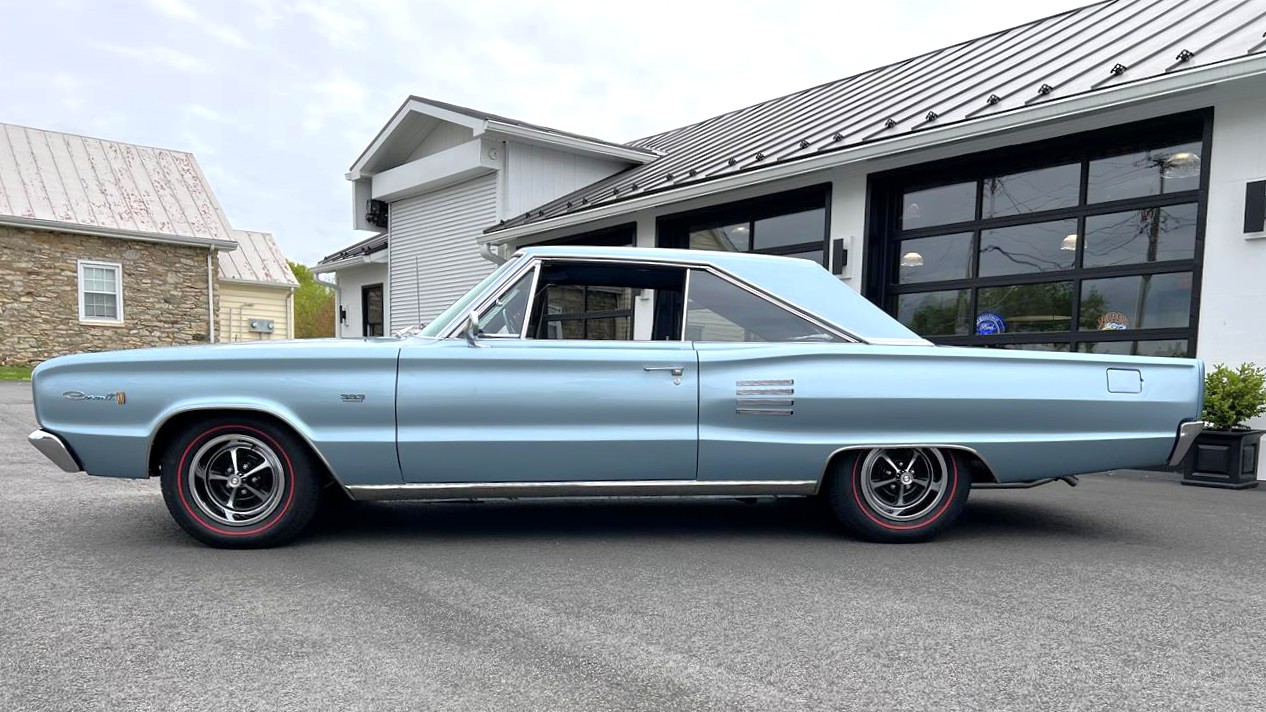
It’s difficult to discuss the muscle car era without mentioning the 1964 Pontiac GTO, which is the godfather of it all. Oldsmobile responded quickly with the 4-4-2, though it was a 330ci performance car that simply was not in the same league as the Poncho. For 1965, Oldsmobile developed a 345-horsepower 400 for the 4-4-2, giving the GTO a more proper competitor. The same year, Buick introduced the Gran Sport for the Skylark, which included a 325-horsepower 401 “Nailhead.” And, lastly, Chevrolet also introduced the mid-year Z16 Chevelle SS, which included a unique L37 396. However, it was a limited-production vehicle developed to showcase the all-new 396, with Chevrolet not introducing a regular-production Chevelle SS 396 until 1966.
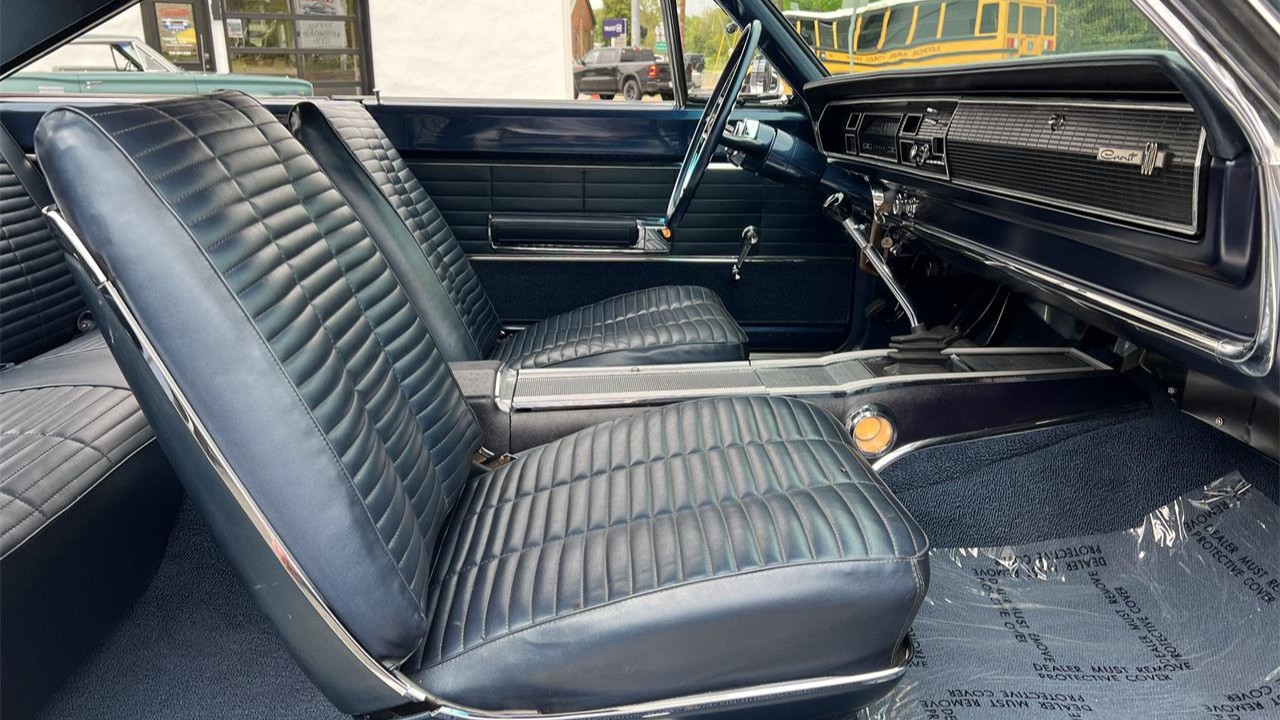
Over in Dearborn, Ford introduced the flashy Fairlane GT, which included a 335-horsepower 390 and the option of a console-mounted automatic that could be shifted manually while maintaining a particular gear. Over at Mercury, there were two Cyclone models, but only the Cyclone GT carried the suds with the hot 390, plus it was chosen to pace the Indianapolis 500 in 1966.

The Chrysler Corporation did not quite understand the performance market as it was, instead doing things the old way: offer a regular model with the option of a big engine. For Mopar enthusiasts who leaned towards Dodge, there was the Charger or Coronet. The latter was available in several trim levels, from the fleet-friendly base Coronet, Coronet Deluxe, and Coronet 440 to the fancy Coronet 500, giving performance fans a choice that was contrary to the GTO and most of its competitors, which were upscale models with the most deluxe trimmings. With respect to Dodge, the Coronet 500 played that role, as the two-door hardtop and convertible were offered with standard bucket seats and a console. Outside, four distinctive diecast louvers decorated the rear fenders, simulating air intakes, and there was a host of chrome around the wheel wells and elsewhere.
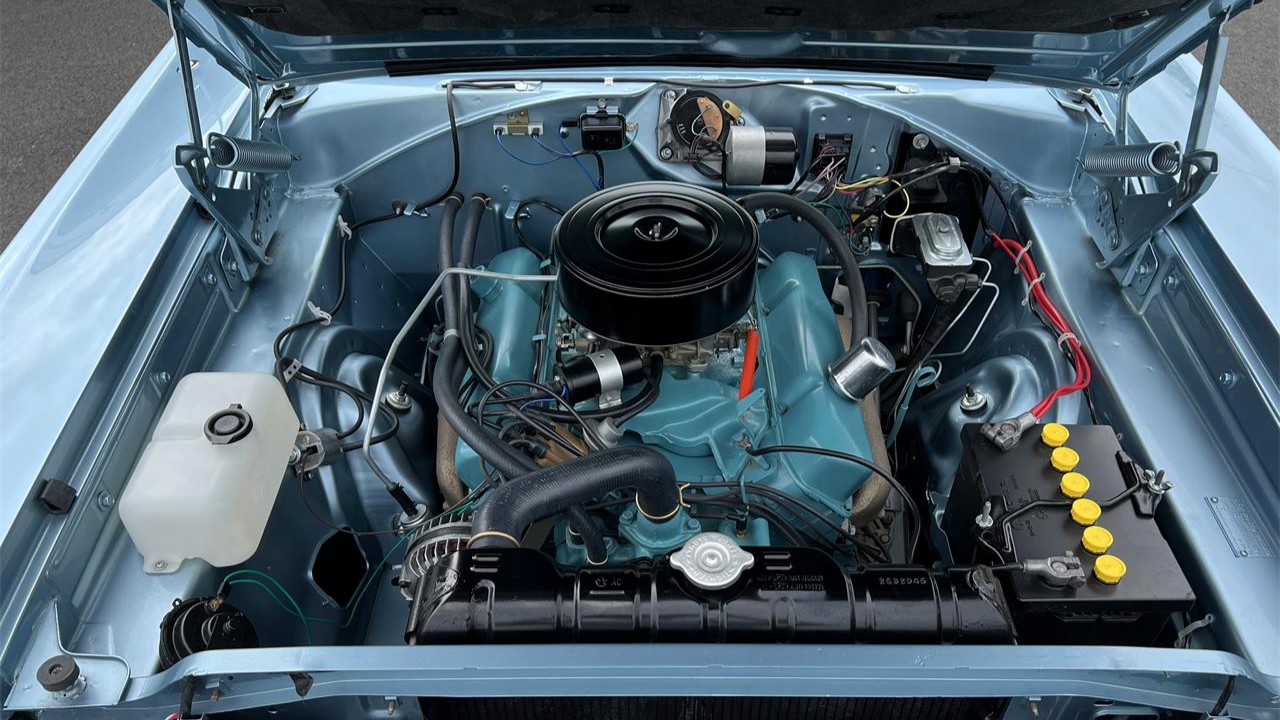
The first engine that helped the Coronet compete with the GTO was the 383 four-barrel. In 1966, it was rated at 325 horsepower, which was 10 horsepower less than the GTO’s standard 389 four-barrel. A four-speed or TorqueFlite automatic was the only choice. If an enthusiast wanted more suds, (s)he’d have to make a big jump to the 426 Hemi, which made its debut as a street engine for 1966. Though Dodge offered an in-between engine, the 440, it was only available on the full-size C-body platform.
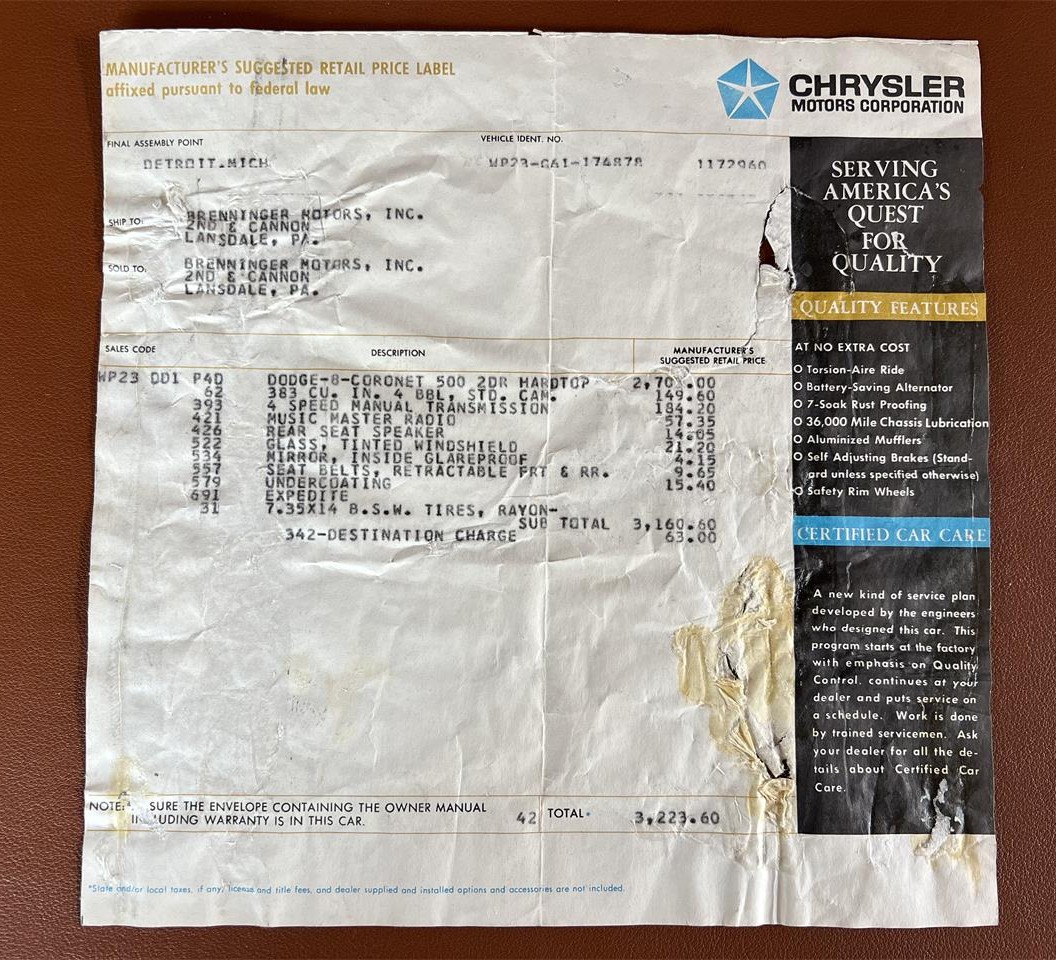
Chrysler finally followed the proper formula for 1967 with the introduction of the Dodge Coronet R/T (and its cousin, the Plymouth GTX). Chrysler wised up and included a standard 440 as well. And the lowly 383? For 1968, it received some upgrades that added five horsepower in 1968, but a special mid-year model called the Super Bee added another five to that . . . but that’s another story for another day.
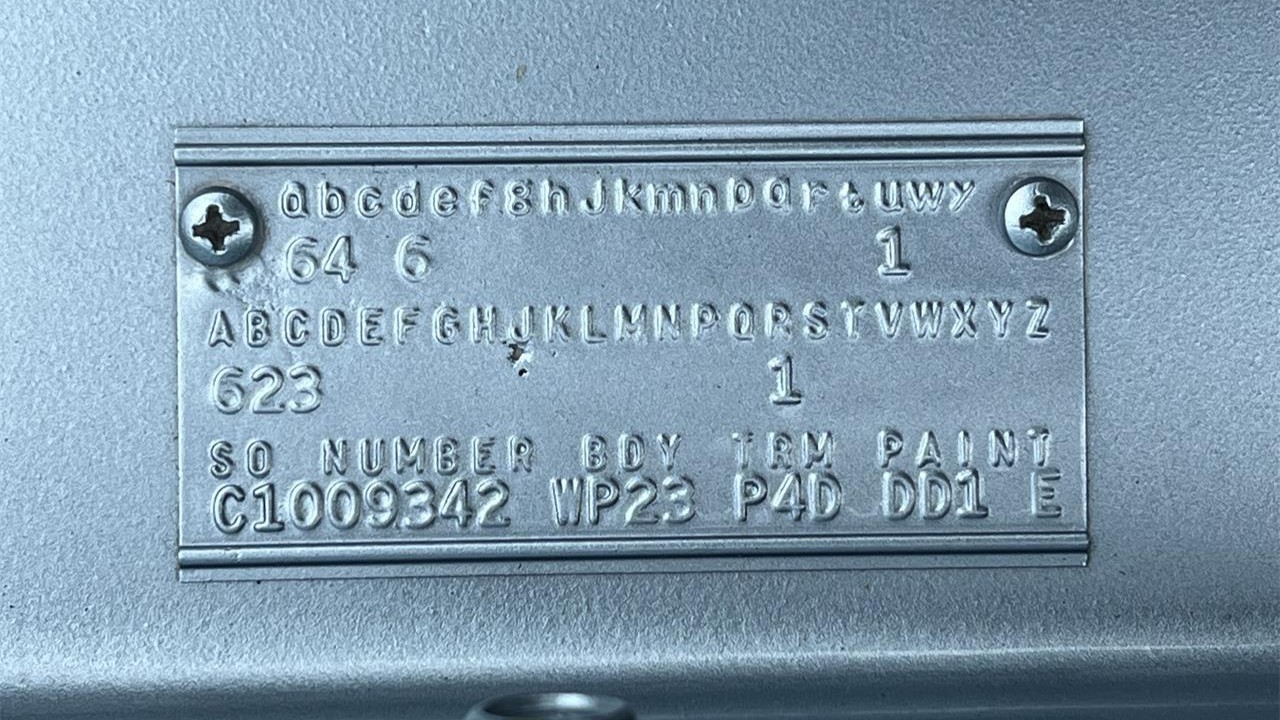
This Medium Blue metallic 1966 Dodge Coronet 500 two-door hardtop appears to be one of those GTO competitors, even though it looks quite nondescript in comparison. Peek inside and you’ll find a console-shifted four-speed tied to the 383 four-barrel. Not much info is given in the ad, but I spy a blue interior, remote driver-side mirror, AM radio with rear-seat speaker, tinted windshield, inside mirror, front and rear retractable seatbelts, undercoating, and later Magnum 500 wheels. The pics show this car has been treated right; while I don’t know enough to say it looks correct under the hood, it certainly does look proper.

If you need a nudge, it’s worth pointing out that this Dodge remained in the hands of the original owner through 2018. It certainly is the perfect antidote for GTO fever. Say…maybe that’s where the Dodge Fever marketing campaign came from back in the day. For $69,500, you can catch it.
Click here to view this Pick of the Day on ClassicCars.com

